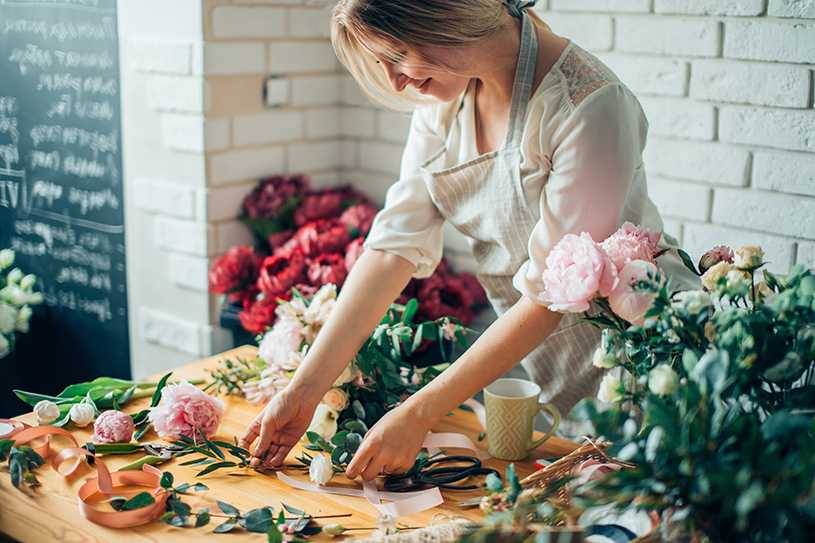Painting your home can create a modern, updated look and increase the resale value of your property. It can also be a fun family or group project.
Plan to make the job go as smoothly as possible. Be sure to budget for moving furniture, preparing walls, and the actual painting. Click https://bunburypaintingservice.com.au/ to learn more.

There are many options for interior paint, including sheens, colors, and brands. Choosing the right one for your project is crucial to the ease and longevity of the finish. Using the wrong type of paint can create an uneven surface that is difficult to work with and can also negatively impact indoor air quality. With so many choices, it’s important to take time to research the different options before making a purchase.
If you’re stuck on finding the perfect shade, most paint manufacturers offer a variety of color chips to help narrow your options. If you find a shade you love, consider purchasing a pint-sized sample and testing it out at home in your existing lighting conditions. Keep in mind that paint color appears differently depending on lighting and can look much darker or lighter than the original sample.
It’s easy to get overwhelmed by the number of color choices available. A good way to help narrow your options is to start with the largest wall in the room and select a few shades that appeal to you. From there, you can move on to accent walls or even furniture pieces, and choose coordinating colors for those elements.
Another great option is to consider a monochromatic scheme, which uses varying shades of the same color. This can be a great option for those who are afraid of bright or bold hues, and it’s a beautiful way to add depth to a space. If you’re worried that a monochromatic scheme will feel too monotonous, you can always introduce pops of color with pillows, curtains or other furnishings to tie in your design theme and add personality.
It’s also important to consider the adjacent rooms when selecting paint colors. The colors of the adjacent rooms should complement each other, and they should coordinate with any other permanent features in your home, such as stained wood floors or exposed beams. Finally, don’t forget to factor in any light fixtures or electrical outlets that will be covered by the new paint color.
After you’ve narrowed down your options, it’s time to purchase your paint. The best place to buy paint is at your local hardware store or home improvement center. If you’re concerned about the environmental impact of your paint choice, look for options that are low VOC (volatile organic compounds) or Greenguard Gold certified. Then you can be confident that the product you’re putting on your home is safe for you and your family.
A fresh coat of paint can transform the look and feel of a room. It can make it more inviting to guests, and it can also increase the value of your home if you decide to sell it in the future. But before you can get to that stage, you need to prepare the surface for painting. This step is crucial, but it’s something that many people overlook. In fact, this is one of the most common reasons that paint jobs go wrong, leading to poor coverage and an uneven appearance.
Surface preparation involves a series of steps that help ensure that the new paint will adhere to the surface. It’s the process that professional painters use to achieve top-notch results.
The most important step in surface preparation is cleaning the surface to remove any dirt, dust, or debris that may interfere with adhesion. This can be done with a power washer, if necessary, or a mild detergent solution. After the surface is clean, it should be sanded to create a smooth base for the paint. Finally, any cracks or holes in the surface should be filled in using caulk or filler.
It’s also important to prepare the area for painting by clearing and covering furniture and floors. This can prevent accidental spills that could ruin the final result. You should also try to use low-VOC paints, which will reduce the amount of harmful chemicals released into the air during the painting process.
A good surface preparation can ensure that the paint will last for a long time and will not peel or flake. It can also prevent damage to the walls and other structural elements of the house, ensuring that your investment is protected. So don’t skip this important step in your next home painting project! Instead, take the time to properly prepare the surface for painting and you’ll be rewarded with a beautiful, long-lasting finish that will completely change the look of your home.
No painting advice is more often ignored by do-it-yourselfers than the recommendation to thoroughly wash walls before priming and paint. This step is key to a beautiful finish that lasts for years. Over time walls get damaged by moving furniture, toddlers with markers and other hazards. The damage may not be visible to the naked eye, but it will show up under a fresh coat of paint. If you skip this critical step, your paint job will soon be ruined.
Start by washing your walls with a solution of water and soap. This will remove grime, cobwebs and dust that can prevent your new paint from adhering. You should also clean all trim surfaces, including doors and windows. After washing and drying, sand any walls with a light grit to provide a smooth surface that will help the paint bind to the wall. It’s best to use 150 to 200-grit sandpaper, as anything finer can cause damage and leave behind uneven areas.
You will want to clean any holes, cracks and crevices before you fill them. If possible, use a flexible filler that can be sanded. The Polycell Polyfilla range has a variety of fillers to suit different gaps and sizes.
Marker and crayon marks can be a real challenge to cover with paint. They’ll bleed through even the most stain-blocking primer and paint. If you can, try to wash them off with a Mr. Clean Magic Eraser or similar product soaked in warm water. If not, cover them with a stain blocker that will stop the marks from bleeding through.
When you’re ready to begin the actual painting, make sure your floors are protected with drop cloths or tarps. Move any furniture away from the walls, and cover any pictures or other items with masking tape to protect them from splatters and drips. It’s also a good idea to remove all hardware from the walls, including nails, hooks and screws, and to tape off any surfaces you don’t want to paint (like trim and outlet faceplates).
It’s a great idea to make a list of any problem areas before you paint. This way you can keep track of what needs to be done and ensure you enclose the necessary materials on hand.
Paint can be messy, so before you get started, cover floor surfaces and furniture with tarps to keep paint from splattering. Also, remove light switch coverings and other wall-mounted hardware to make it easier to paint those small areas around them. It’s best to work in the daytime to help you see what you’re doing, but if that’s not possible, use a portable working light to illuminate the area you’re painting.
To apply the paint, you’ll need to choose a roller, a brush, and either a tray or a bucket to hold it all in. If you’re using a roller, use a thick-napped one for textured walls and a long handle to reach high spots without a ladder. If you’re painting over a light color with a dark shade, it’s a good idea to use a primer or stain-blocking bonding primer like Valspar’s Stain-Blocking Primer/Sealer, as it will help the new paint resist stains. You’ll also need to sand the surface to help the new paint adhere.
Once you’ve sanded the wall and cleaned it thoroughly, you can begin to paint. Start with the ceiling and then move to the walls. Paint the architrave (the frame around the door and window) last, as this can be difficult to reach.
It’s a good idea to do two coats of paint, especially if you’re going from a light color to a dark one. The first coat will hide the previous color and the second will help it adhere to the wall. It’s also a good idea to wait a couple of hours in between coats, so the paint has time to set and dry.
When the second coat is dry, you can peel up the tape and reinstall light switch covers and other wall accessories, clean your brushes (soapy water works fine), and pack away your supplies. When you’re done, give yourself a pat on the back for a job well done and admire your beautiful new wall! And don’t forget to save any unused paint cans for touch-ups. Just be sure to dispose of them properly so they don’t end up in a landfill.





